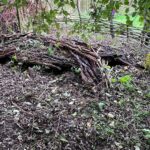Hedgehog Domes

A zero-maintenance, nature-based design providing safe nesting for hedgehogs and a rich habitat for pollinators, birds and other wildlife, even in urban parks.
Introduction
The Hedgehog Dome is a groundbreaking approach to hedgehog conservation, designed to provide a natural, long-term shelter that goes far beyond traditional wooden hedgehog houses. Inspired by the way hedgehogs create their own dens in the wild, the Dome offers a safe, insulated, and weather-resistant nesting space, without the risk of rot, mold, or collapse. Built from natural, sustainable materials and covered with native plants, it blends seamlessly into its surroundings while creating a miniature ecosystem that supports insects, birds, and other small wildlife.
Unlike many artificial shelters, the Hedgehog Dome is based on a zero-maintenance philosophy: once installed, it requires no inspections or repairs, allowing wildlife to live undisturbed. Whether placed in a city park, community garden, or private backyard, the Dome is a visible, functional statement of care for local biodiversity and a way to inspire others to take action for the wildlife on their doorstep.
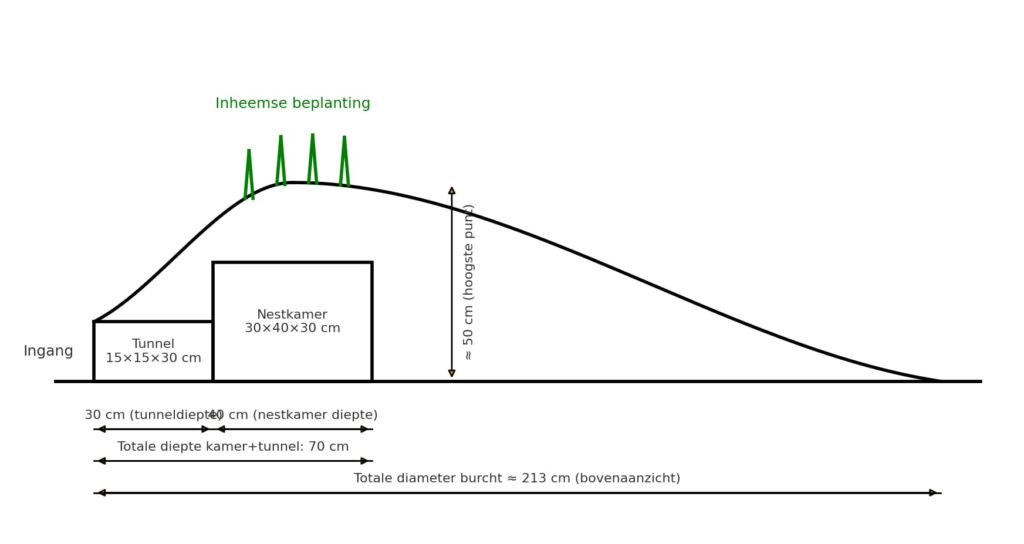
How the Hedgehog Dome works
- Semi-buried nest chambers, each with its own entrance tunnel.
- Entrances sized to allow hedgehogs, but exclude most predators.
- Drainage later at the bottom of each chamber.
- Soil and native plants on top create insulation and habitat for insects; natural hedgehog food.
- A gently sloping rear side allows easy access for feeding on top.
Zer0-maintenance philosophy
The Hedgehog Dome is designed to work with nature, not against it. Once installed, it becomes a safe, stable, and self-sustaining shelter — no seasonal upkeep, no replacement parts, no disturbance for the wildlife using it. Built from natural, long-lasting materials, each nesting chamber stays dry and insulated year-round, while the planted top layer boosts local biodiversity and attracts the insects that hedgehogs love to eat.
It’s a one-time effort with long-term benefits:
No need for cleaning: hedgehogs build their own nests and soil life helps to break down old and rotten materials.
No need for replacement: if the first structure gets broken down by soil life, plant roots will keep the dome intact.
A planted top layer with native flowers and plants that supports biodiversity without mowing or pruning.
More than a home for hedgehogs
The Hedgehog Dome doesn’t just protect hedgehogs: it becomes a living microhabitat. The plants above attract pollinators and insects, which in turn feed birds, amphibians, and hedgehogs themselves. The shaded base offers shelter for frogs and toads, and the structure supports soil health by preventing erosion and fostering beneficial soil life.
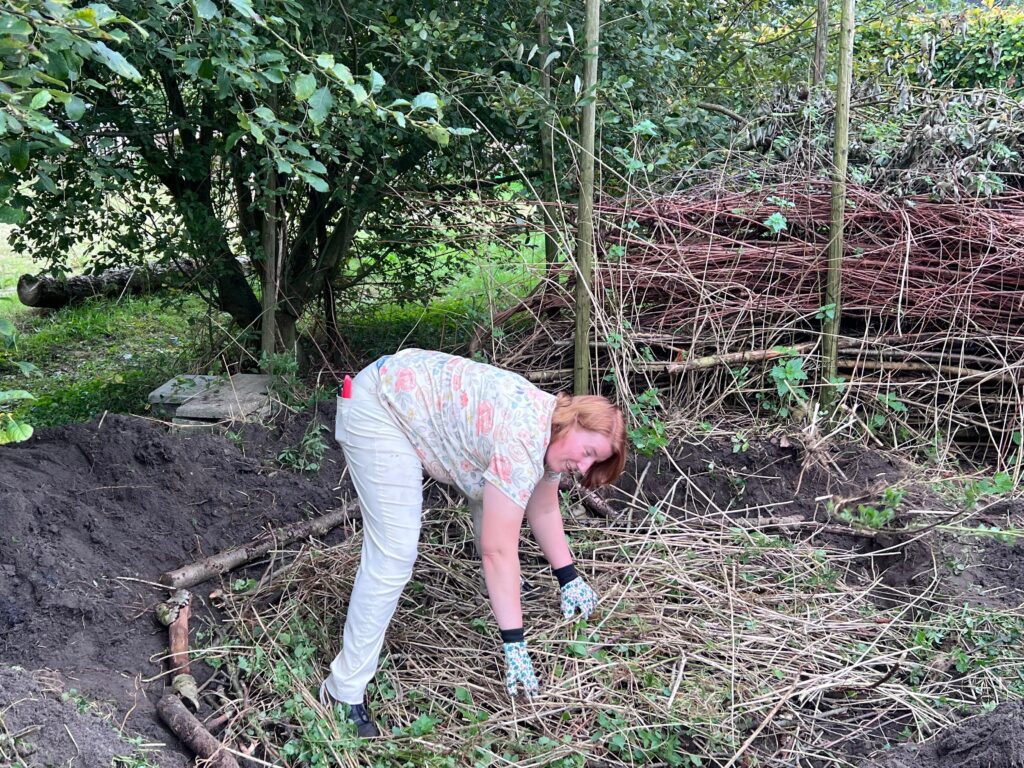
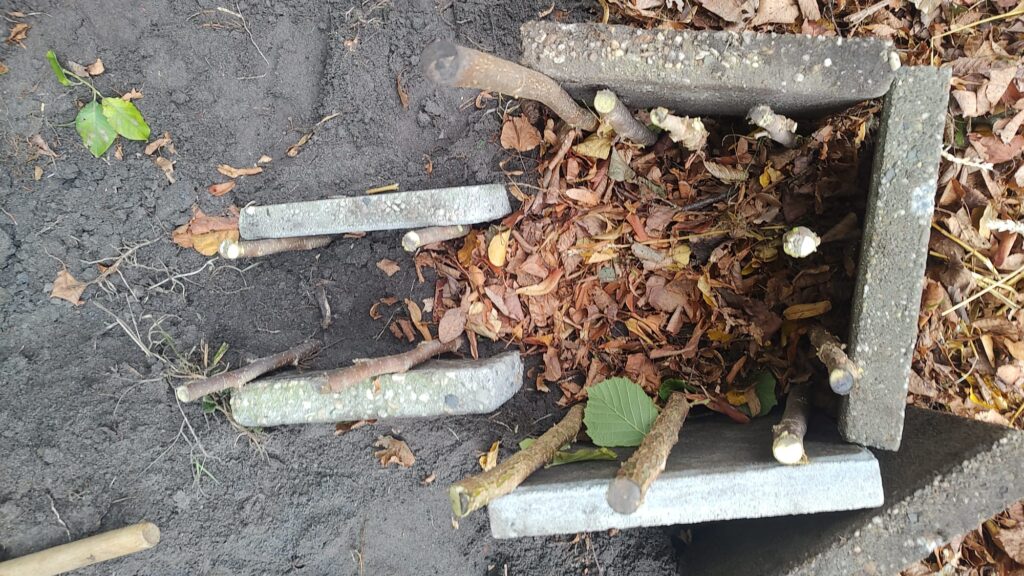
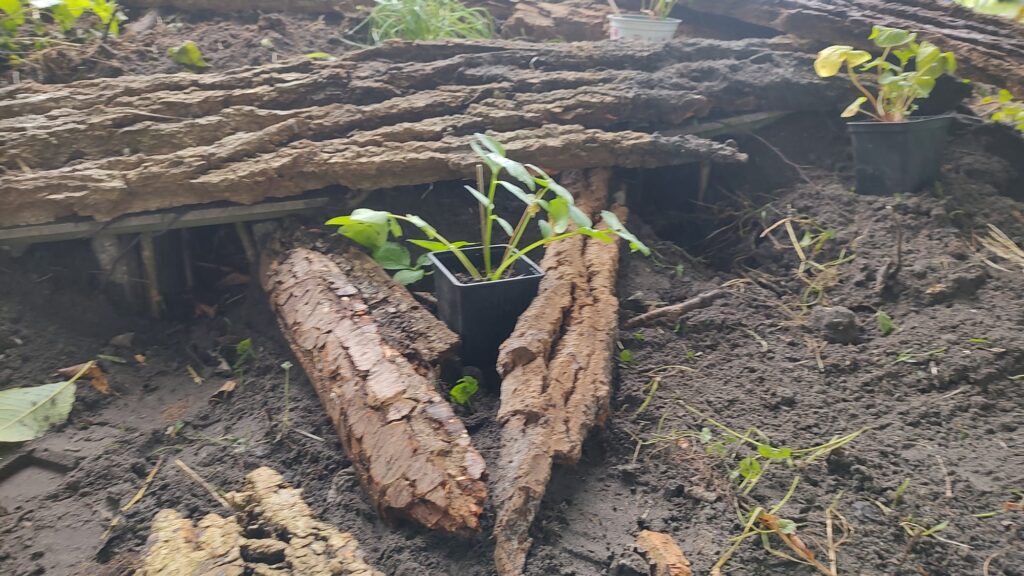
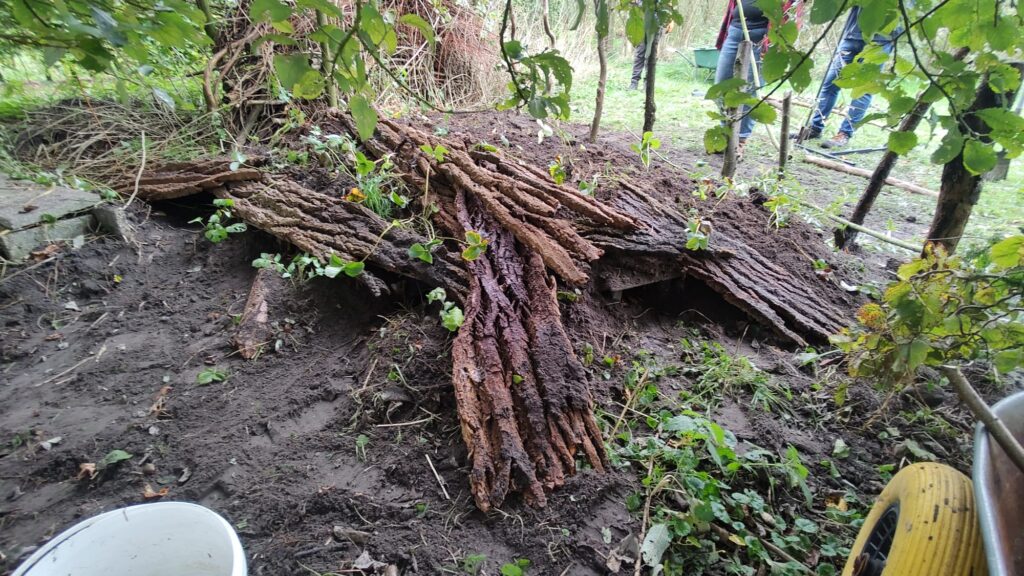
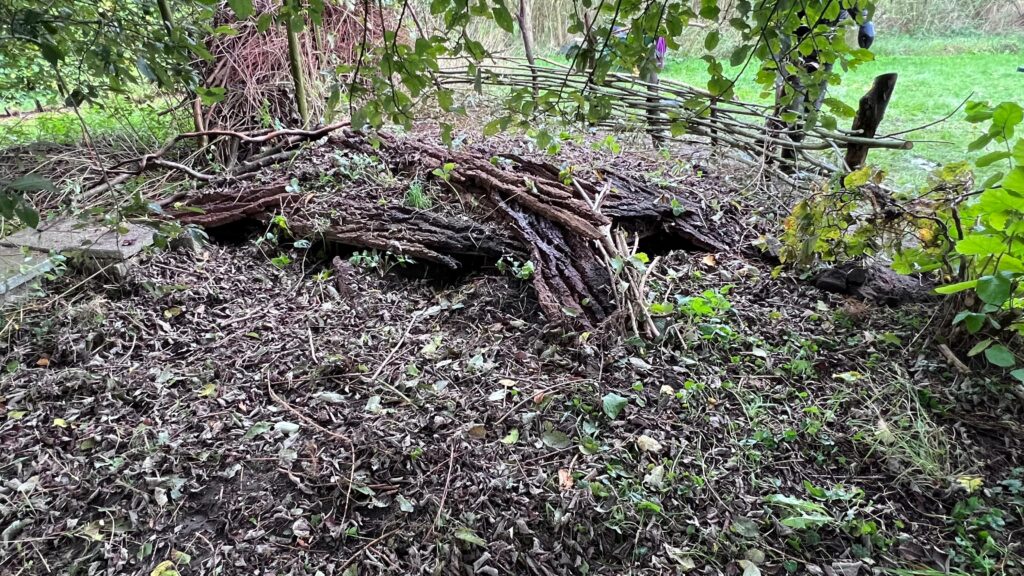
Ecosystem benefits
The Hedgehog Dome is more than just a shelter: it’s a small but powerful boost for the surrounding ecosystem. By combining safe nesting spaces with vegetation that attracts insects, the Hedgehog Dome creates a microhabitat that benefits multiple species at once, even in busy urban settings.

For hedgehogs
The Hedgehog Dome provides hedgehogs with secure, dry, and insulated nesting chambers that mimic the natural dens they create in the wild. Multiple entrances allow multiple hedgehogs easy access while keeping predators out, and the surrounding plants offer food sources such as beetles, caterpillars, and earthworms. This combination helps hedgehogs conserve energy, raise their young safely, and return year after year.

For pollinators
The planted top layer is designed to bloom throughout the year with native flowers that attract bees, butterflies, and other essential pollinators. By adding diverse nectar and pollen sources, the Hedgehog Dome supports healthy insect populations, which not only pollinate plants but also provide a vital food source for hedgehogs and other insectivores.
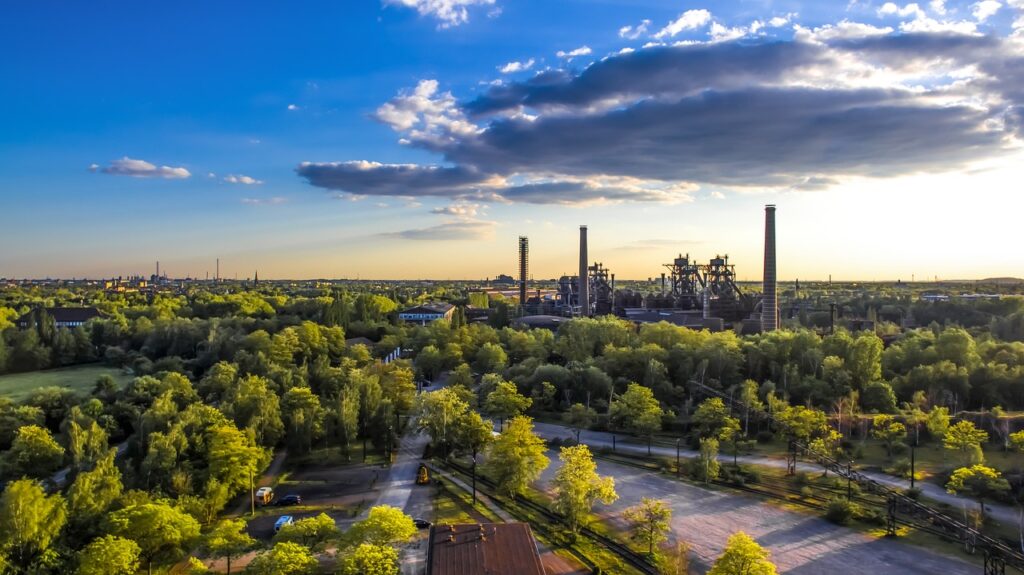
For the urban ecosystem
In urban areas where green space is often limited, the Hedgehog Dome becomes a biodiversity hotspot. It improves soil health, increases local plant diversity, and encourages the presence of beneficial insects and small animals. Even a single Hedgehog Dome can help reconnect fragmented habitats, acting as a stepping stone for wildlife moving through built-up environments.
By supporting multiple species at once, the Hedgehog Dome strengthens the resilience of the local ecosystem, proving that even small interventions can have a big ecological impact.
Recommended native plants
To properly support native wildlife, including pollinator species that feed off of and lay eggs on specific plant species, we recommend using plants that are native to your relative area. For example if you live in The Netherlands:
| Plant name (Latin) | Bloom period | Supports |
|---|---|---|
| Tussilago farfara | March – April | |
| Origanum vulgare | May – July | |
| Eupatorium cannabinum | August – October | |
| Urtica dioica | July – October | |
| Ajuga reptans | April – June | |
| Plantago major | May – November | |
| Trifolium dubium | May – September | |
| Rosa canina | June – August | |
| Buddleja davidii | July – September | |
| Stellaria holostea | April – June | |
| Salvia pratensis | May – July | |
| Aegopodium podagraria | May – August | |
| Lotus corniculatus | May – September | |
| Rumex acetosella | May – October | |
| Matricaria chamomilla | May – September |
Legenda:
- Bees, bumblebees, butterflies & hoverflies
- Beetles, caterpillars, snails & earth worms
- Birds
- Amphibians
- General biodiversity
Pilot phase – the first official Hedgehog Dome
We are proud to announce the launch of our very first official Hedgehog Dome. A pilot project that will serve as both a real-world test and an inspiration for future installations. This first Hedgehog Dome will demonstrate how the concept works in practice: from its unique construction and planting design to its ability to attract and support wildlife from day one.
The Hedgehog Dome was built on October 12th, 2025 at Food Forest Carpe Vitam in Elim, Netherlands. Built by several volunteers and filmed and documented by local news outlets, it’s gaining traction in the wide region and we hope more people and organisations want to build one.
Right now, we are monitoring the Dome for at least 6 months, maybe more. We will share our findings after that period to show the ecological function in practice.
Stay tuned…
Hedgehog Domes in the world
As of right now, there are a few Hedgehog Domes being built and we love to show you where and how they look. And underneath, you’ll find a range of articles about the latest sent-in Hedgehog Domes and their stories.
Build your own
Want to create your own Hedgehog Dome? Our free online course walks you through every step: from site selection to planting the roof with native plants.

